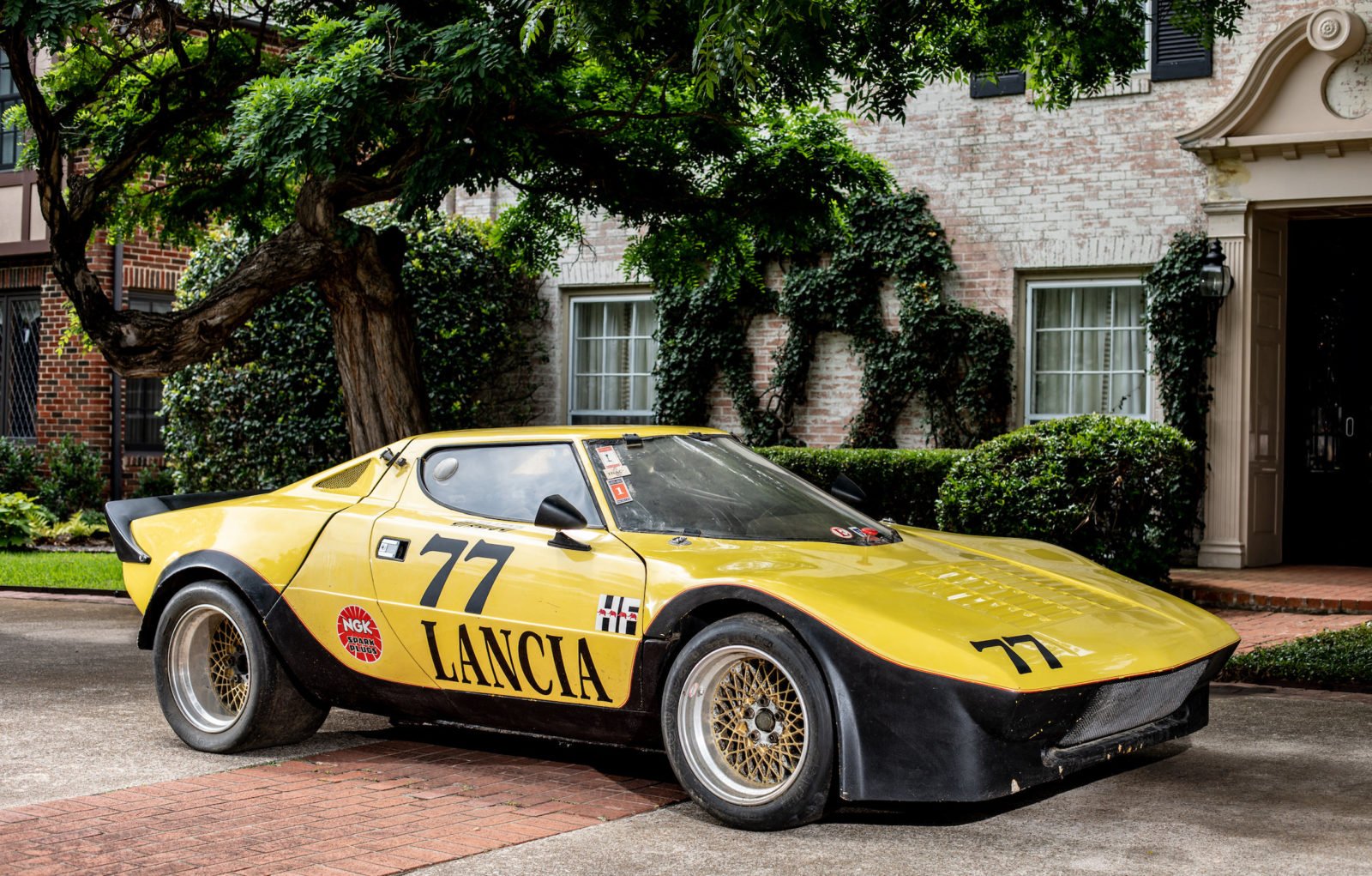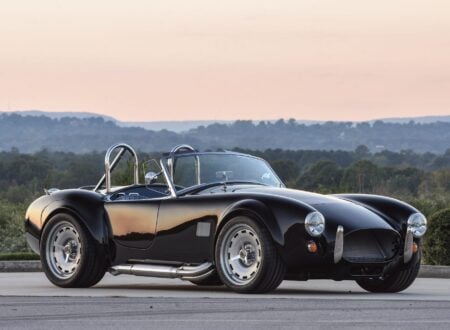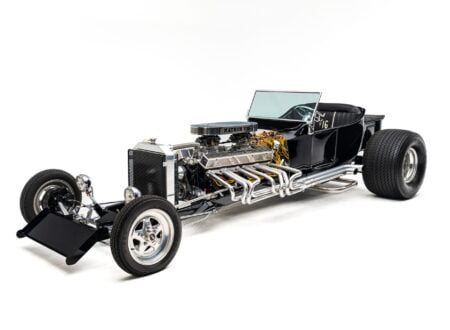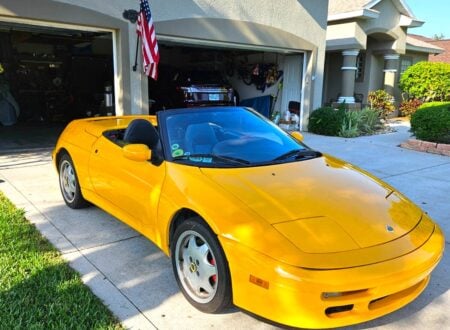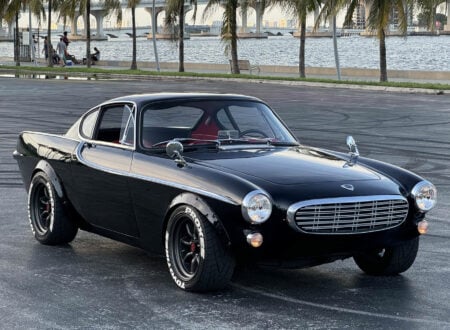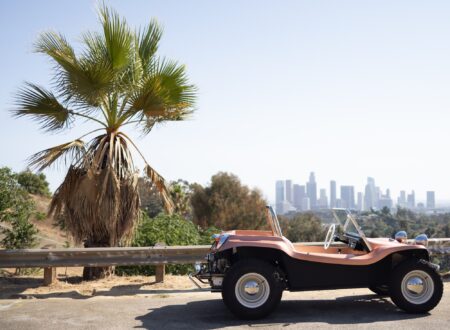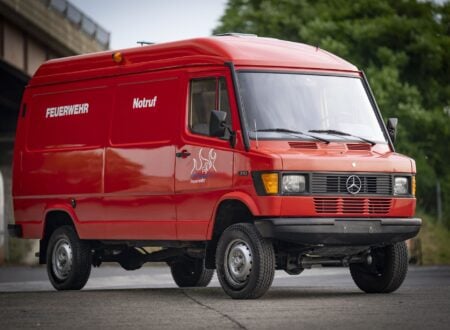This Lancia Stratos HF is one of very few that was raced on track in the United States in period, with entries in the 24 Hours of Daytona, 12 Hours of Sebring, 6 Hours of Watkins Glen, as well as at Talladega, Road America, and Road Atlanta.
The Stratos was one of the most famous racing cars of its time, it won the World Rally Championship in 1974, 1975, and 1976, as well as the 1974 Targa Florio and the 1975, 1976, 1977, and 1979 Monte Carlo Rally.
Fast Facts – A Lancia Stratos HF “Road Racer”
- The Lancia Stratos was designed by Marcello Gandini at Bertone, it was unveiled in 1971 at the Turin Motor Show. It would go on to become one of the most famous examples of “wedge” styling in automotive history.
- The production Stratos was based on the design of the Stratos Zero concept car that was first shown to the world at the 1970 Turin Motor Show. It would later feature in the 1988 Michael Jackson film “Moonwalker.”
- The Stratos is said to have been the first car ever developed from a blank slate for World Rally Championship competition. It’s an uncompromising design with a wide windscreen and low nose giving excellent forward visibility, a mid-mounted Ferrari Dino V6, and razor-sharp handling.
- The car you see here was bought by Oklahoma privateer Anatoly Arutunoff, he prepared it for track-based racing (rather than rally) and competed in some of the most important events in North America in the 1970s and into the 1980s.
Buying The Stratos
When Oklahoma entrepreneur and dealership owner Anatoly Arutunoff first saw the Lancia Stratos HF he began devising a plan to buy one and take it racing. Whereas the Stratos would become most famous for its rallying exploits, Arutunoff wanted to take on the Porsches in the under 2.5 liter class on the asphalt circuits of North America.
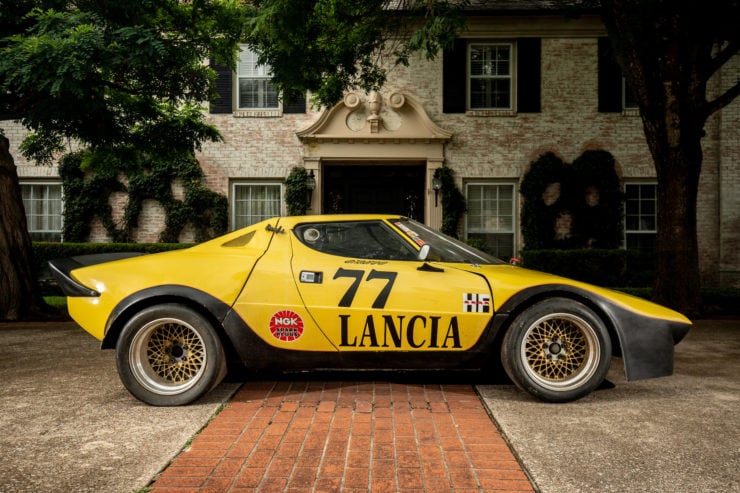

“I thought it was a neat-looking car,” Arutunoff recalled in a recent conversation. “It looked like it had a possibility of beating the Porsches in the under-2.5 liter class.”
Lancia was less than enthusiastic about this idea, and despite what Arutunoff describes as “factory un-support” for his plan, he went ahead with it and bought this Stratos from the factory showroom in Italy in late 1976.
Remarkably he drove the car from Turin in Northern Italy to the port of Cherbourg in Western France where he crossed the English Channel by car ferry. Once in England he loaded the car onto the Queen Elizabeth 2 for shipment to the United States.
The car arrived some time later in Boston, Arutunoff then drove the car through the bitter winter conditions of the north eastern United States heading west until he reached his home in Tulsa – a distance of 1,564 miles.
Preparing The Stratos
Once the car had covered its lengthy intercontinental jaunt from Italy to Oklahoma the modifications could begin.
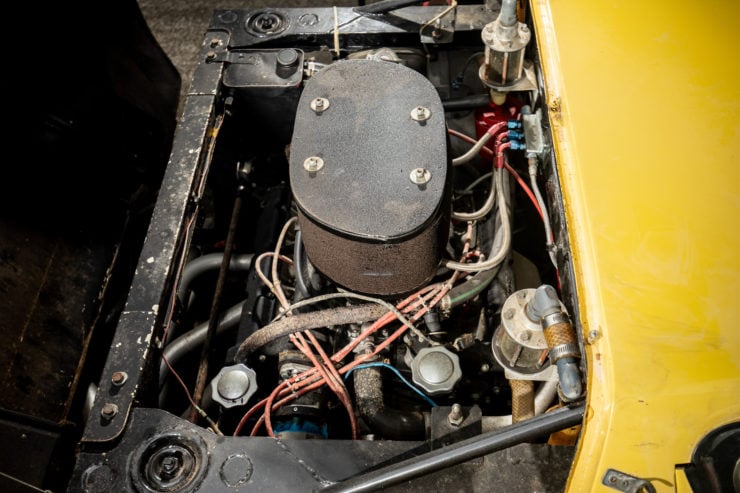

The “basket handle” spoiler atop the car had to be removed to meet IMSA aero regulations however after contacting Lancia about the potential implications of this they were told it was a purely cosmetic feature.
Wider basketweave wheels were added with similarly wide rubber, this necessitated wider fenders to keep them covered, most noticeable at the rear of the car. A lower chin spoiler was also added, and the interior was stripped of everything not essential for racing.
Once preparations were complete the car was affectionately nicknamed “The Duck” due to its bright yellow livery.
Racing The Stratos
The Stratos was raced extensively from 1977 onwards with entries into a slew of major North American races. Its first race was the 24 Hours of Daytona in 1977, making it the first and only Stratos to ever contest the event.
Later entries would include appearances at Sebring, Watkins Glen, and returns to Daytona, plus races at Road America, Road Atlanta, and the legendary Talladega. Indianapolis 500 winner Danny Sullivan served as co-driver in this car at Daytona and Sebring in 1979.
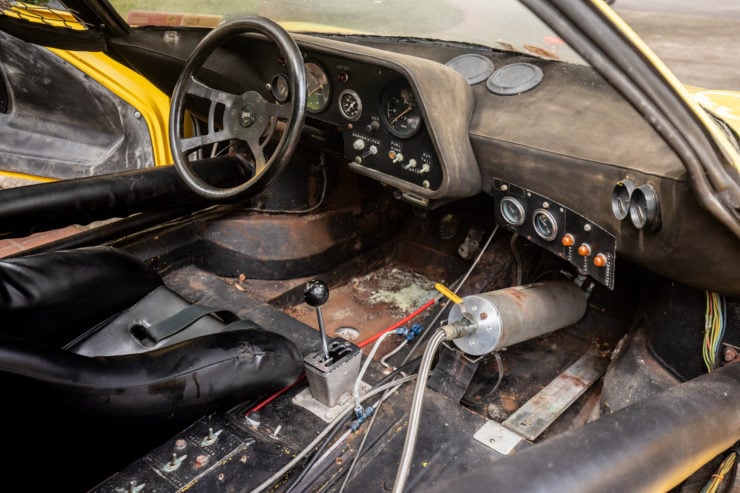

The Lancia’s final race in period was at the Budweiser Grand Prix of Miami in February 1984.
Buying The Stratos
Since its competition life came to an end the car has been kept in largely original, “as raced” condition. It was acquired by its current owner in 1986 and they note that it would require recommissioning before any racing is attempted.
The car would be a very welcome entrant at a wide range of vintage races worldwide thanks to its extensive use in major races in period.
It’s accompanied by a research file and a selection of parts, including a set of OEM wheels, wiring harness, exhaust components, and fuel tanks removed during the Lancia’s racecar conversion, as well as body panels and panel molds.
If you’d like to read more about this car or register to bid you can visit the listing here on RM Sotheby’s. It’s due to roll across the auction block with them in August in Monterey, California.
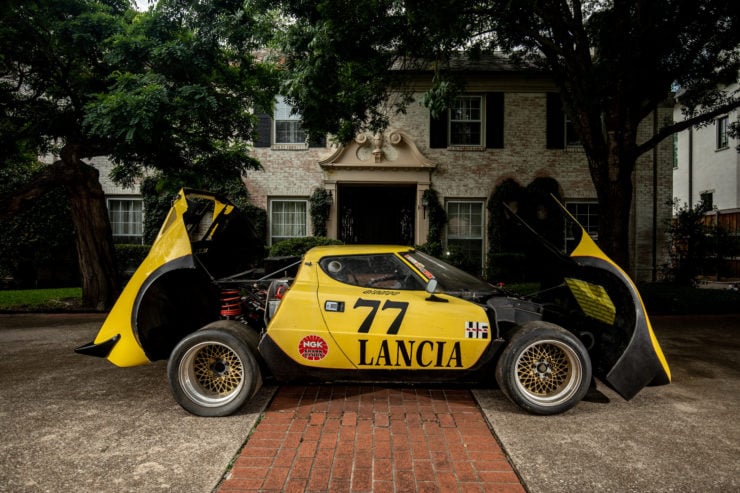
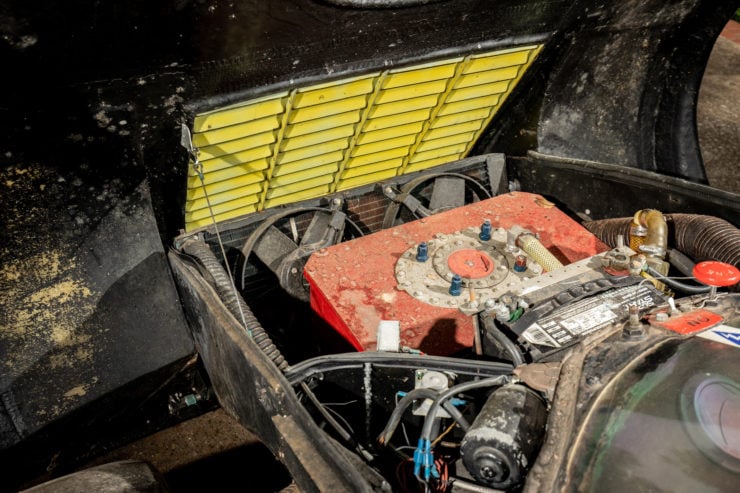
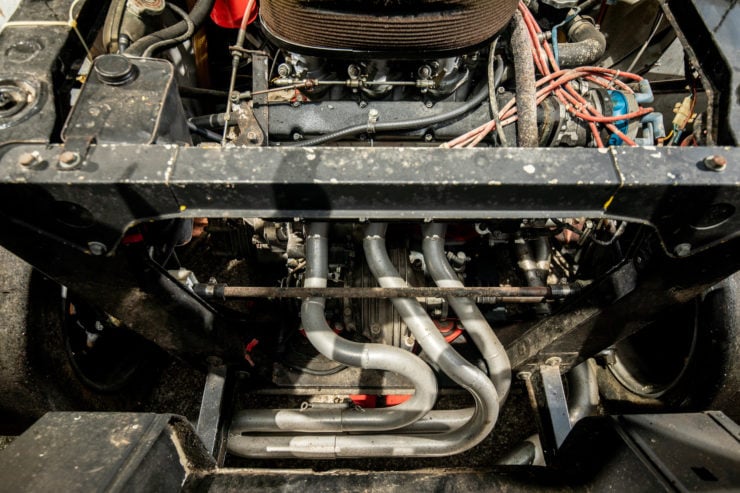
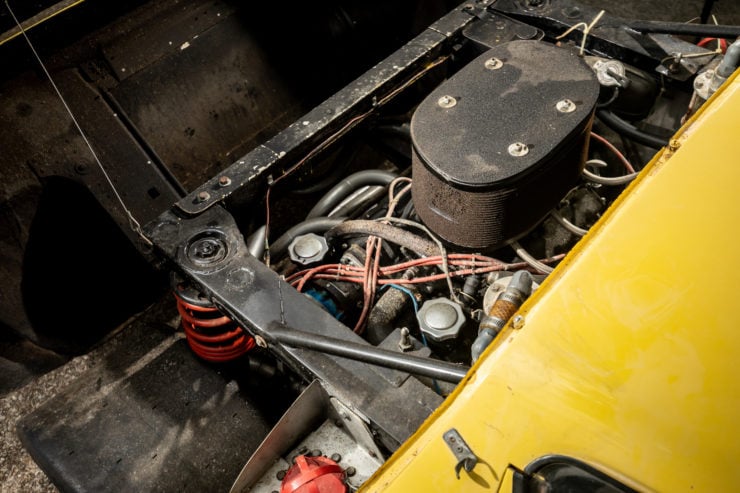
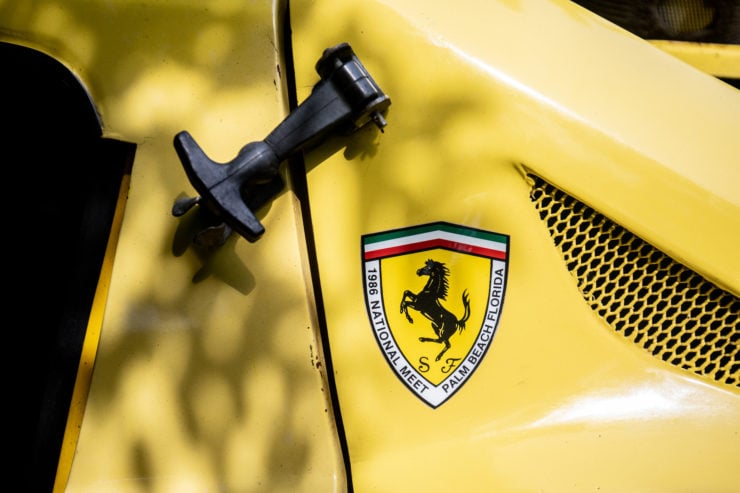
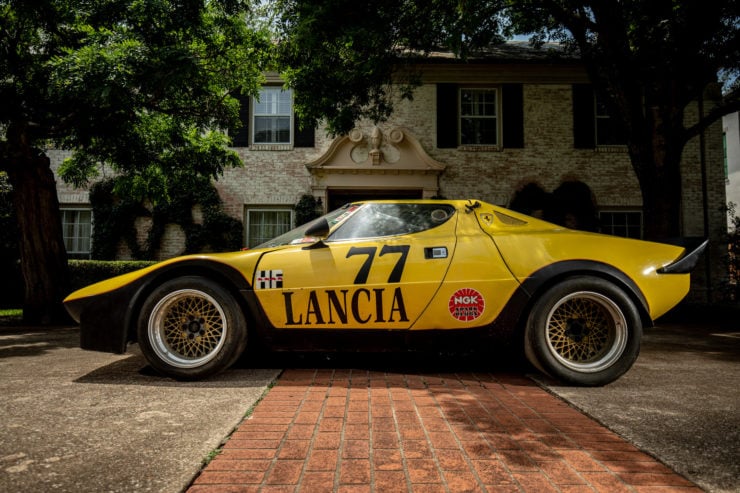
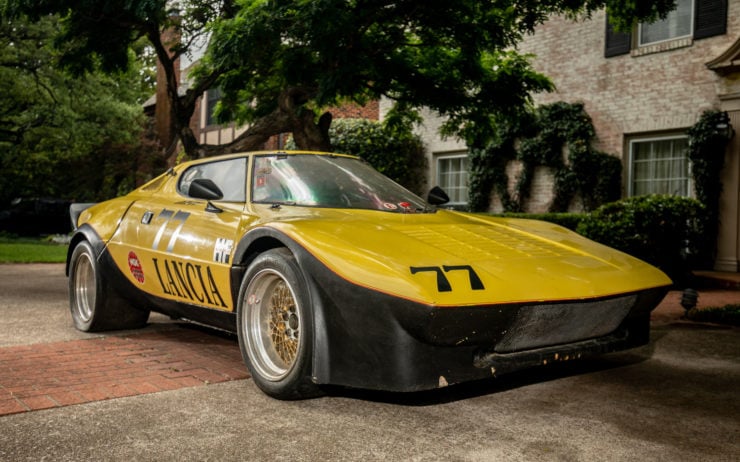
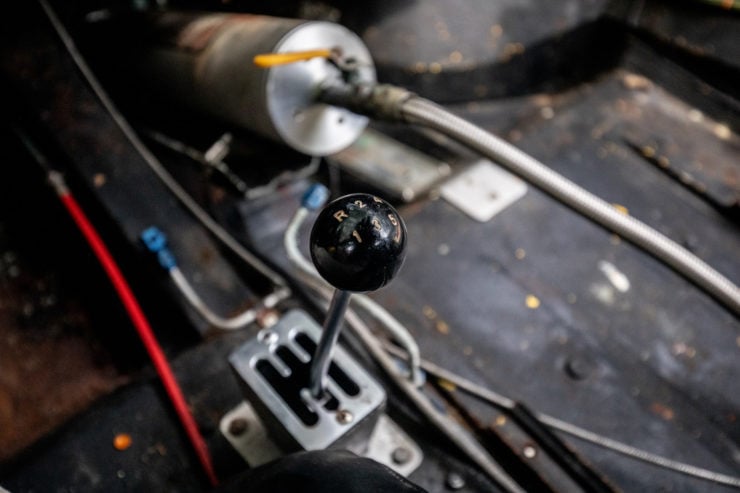
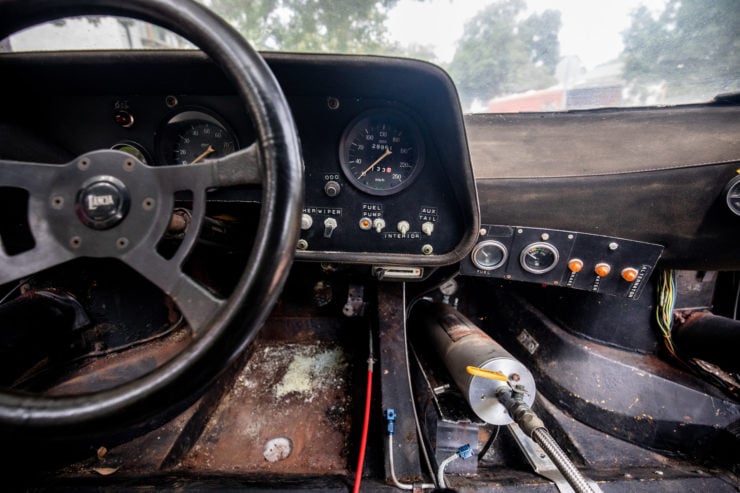
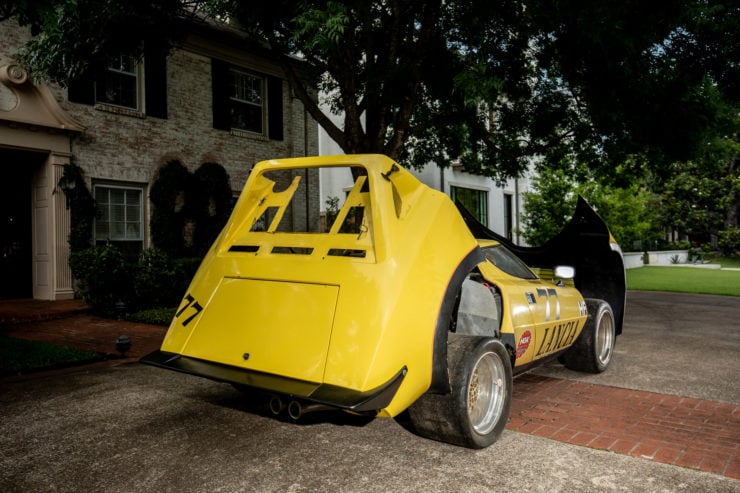
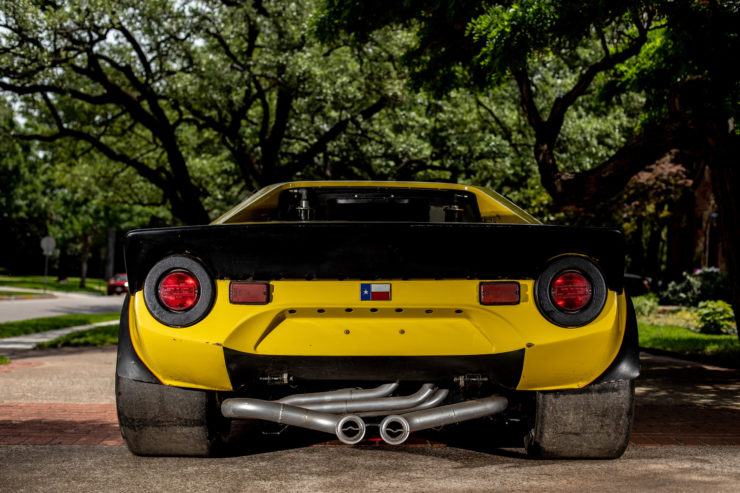
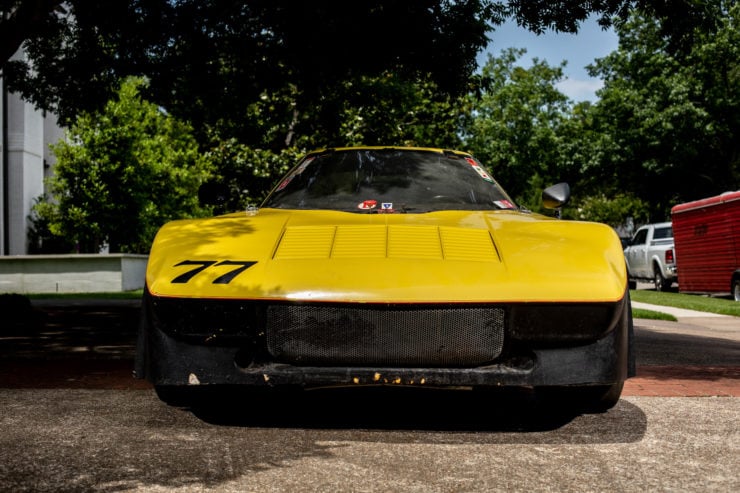
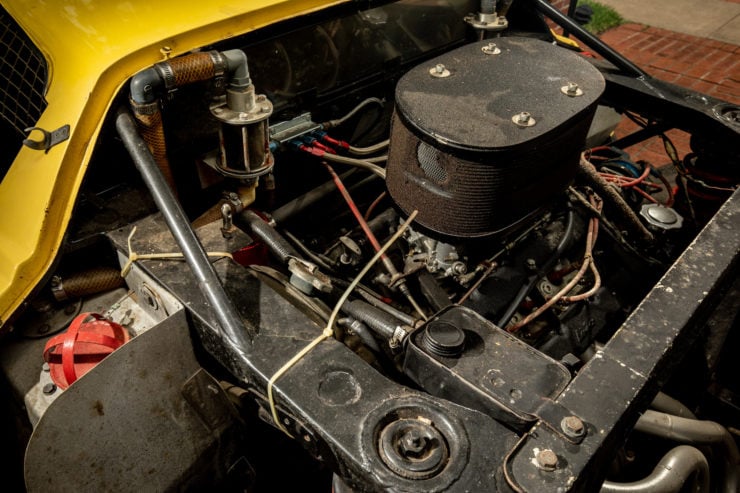
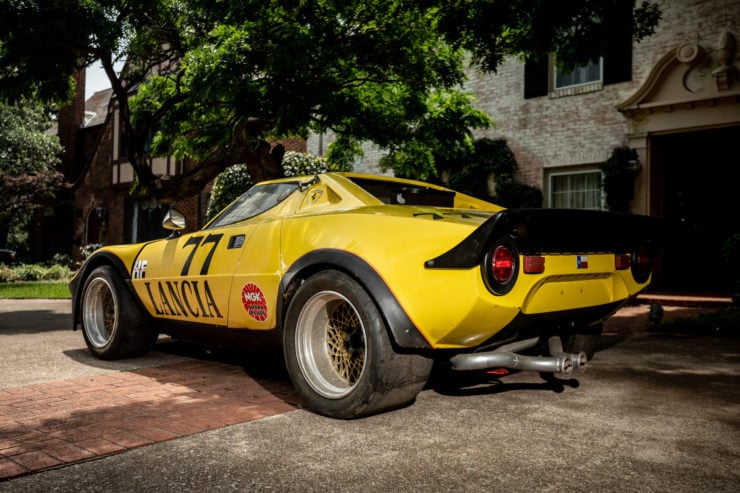
Images courtesy of RM Sotheby’s

